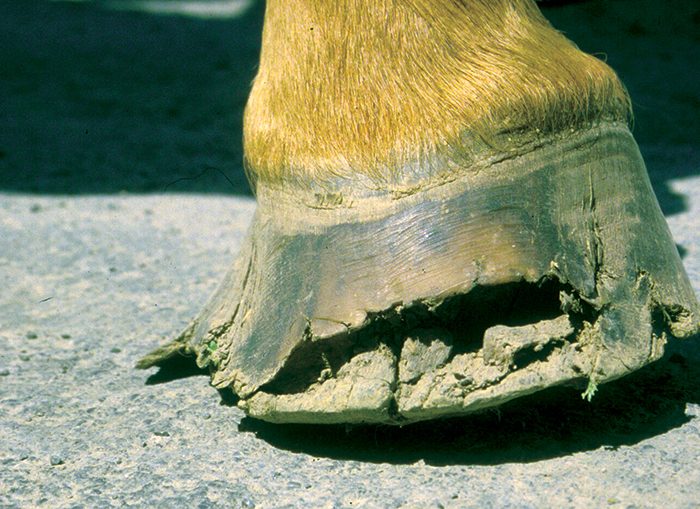American Farriers Journal
American Farriers Journal is the “hands-on” magazine for professional farriers, equine veterinarians and horse care product and service buyers.

During wet months, white line disease is sure to top the list of concerns for many farriers shoeing appointments.
While we are all familiar with white line disease in its advanced stages, it is my belief that there is no reason a horse should suffer from advanced lesions if we are diligent and observant in our day-to-day shoeing.
First let’s look at the pathogenesis of white line disease. Varied research findings that are available can confuse this issue. White line disease has recently been linked to both opportunistic and anaerobic (thriving in the absence of oxygen) fungal infections. Mike Wildenstein, certified journeyman farrier and Fellow of the Worshipful Company of Farriers of Great Britain, did his fellowship thesis on white line disease. The resident farrier at the Cornell University School of Veterinary Medicine showed, through sampling of lesions, that various types of fungal components were active within lesions. He noted, however, that simple sampling of the solar margin of the hoof can easily be tainted, as all of the strains mentioned occur naturally in the mud of a the paddock. To get around this, his research focused on samples taken out of the dorsal wall and in a sterile setting.
White Line Disease: Different Approaches To An Old Problem
Our in-depth eGuide on white line disease aims to dramatically help the horses in your practice suffering from this ailment, and it’s FREE! Download now »
It is also interesting to note that speed was…